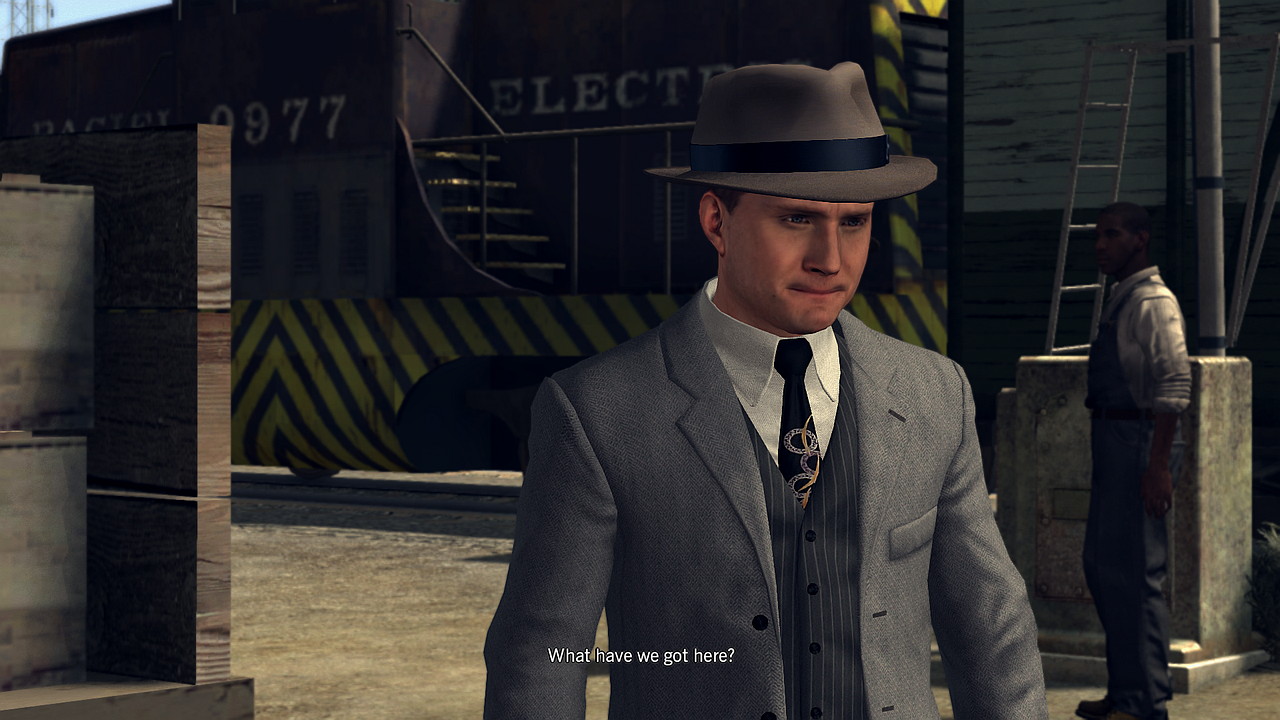
L.A. Noire
Written by: Rik
Date posted: April 29, 2018
- Genre: Adventure
- Developed by: Team Bondi
- Published by: Rockstar Games
- Year released: 2011
- Our score: 8
Let us begin by acknowledging that a review of L.A. Noire does feel slightly weird, even though it comfortably meets our slightly woolly criteria for coverage: indeed, a long time ago we would have thought nothing of adding a write-up of a relatively modern game, as long as the initial hype had died down and it was subject to a budget re-release of some kind. Put it down to a function of ageing: a few years doesn’t seem as significant a period of time as it used to.
All that aside, there is also something interesting and unusual about this game, particularly the way it echoes some of my most beloved oldies – the big-budget, single-player, occasionally-clumsy titles of the 90s CD-ROM era – that sort of makes it particularly relevant for coverage here. I should also say that as someone who engaged in a long and ultimately fruitless quest to find a decent CSI tie-in, the prospect of another game – any game – that genuinely attempted to focus on detective work was always going to appeal.
And L.A. Noire is certainly a detective game. It’s also kind of like those darned-popular Grand Theft Auto games. And it’s a cover shooter. And a TV series. It’s an action-adventure, but one where the adventure bit means “like a point and click adventure” and not “like going on an adventure holiday”. You know, clues and puzzles and talking and that.
The setting is postwar 1940s USA, and your character is Officer Cole Phelps, army hero and up and coming preppy goody-two-shoes in the LAPD. Early levels act as an effective tutorial: as a uniformed officer you’re called to a crime scene to provide assistance. The homicide detectives that are already there can’t be arsed: the victim, they tell you, was a lowlife, but go ahead and have a look for evidence anyway.
As you progress, all the basics get covered: driving to a location; the role of your partner – in this case, Officer Ralph Dunn, a likeable but cautious foil for the ambitious Phelps – in investigation; combing the scene to look for clues (aided by visual, audio and vibration-based prompts, should you so wish), noting relevant findings in your notebook and doing nothing when it’s a beer bottle or cigarette end. Other elements are then drip-fed in while you continue to work as a patrol officer: combat, both in rudimentary fist-fight and cover-shooter forms, sometimes preceded by a chase (and sometimes with your partner, and/or other officers, for backup); and interrogation, in which you question and probe suspects, hitting them with relevant evidence if they lie to you. With all that covered, you make detective (as they say in America), and the game proper can begin.
L.A. Noire‘s standout feature is probably its face-capture technology and the use of Hollywood actors (many of whom seem to be drawn from the cast of Mad Men, including Aaron Staton in the lead as Phelps – see Change the Conversation, for more). The visuals may not be as cutting edge as they were, but they’re still something to behold, eerily impressive for all that there are occasional glitches. For once, character faces are expressive and the cast aren’t the usual dead-eyed mannequins, with mouths and teeth also being more convincing than usual. It gives life to the characters, something that all too often went missing as our favourite 2D adventures transitioned to 3D.
The technology does have a practical use, as you’re meant to read suspects’ expressions to see if they’re lying or not. The bodies don’t quite live up to the same levels of realism, although I didn’t find there to be a particularly jarring disconnect. Perhaps it’s because I never watched Mad Men until after playing L.A. Noire, so I didn’t, for example, realise that Staton (Mad Men‘s affable Ken Cosgrove) was a fairly tall and lanky figure in real life, whereas Phelps seems comparatively stocky.
The other big star is L.A. itself, of course, which seems to have been faithfully recreated, although I’m not sure to what end. The city is kind of like a hollow model: it looks very nice, but there’s little incentive to explore, even if you do get points for spotting famous landmarks. There are plenty of authentic cars from the period, but as you’re playing as a cop and already have one, the necessity to commandeer someone else’s isn’t really there, and it doesn’t feel the same as cheerfully nicking one in GTA. It’s certainly an interesting place and setting, but I’m not sure that unless you were particularly familiar with the real city, or the period, it makes much difference to the experience.
It’s a shame that all that work seems to have gone to waste, as you hop from location to location, even skipping the drive itself if you want by asking your partner to take the wheel. There’s an incentive not to do so, because then you’ll miss out on reports of street crime, L.A. Noire‘s side quests, which usually draw from one or more of the action elements of the main game: usually a chase on foot or by car, and/or a shootout of some kind. These bits can be good fun, and do bring tangible rewards in the form of XP, but again, they don’t really show off the location in any meaningful way, even if you do sometimes have to take ridiculously long detours in order to reach them.
The mechanics of the crime scene investigation (sorry) work ok. I’d advise turning on the various notifications unless you really consider forensic hunting for hotspots all part of the fun/challenge. Generally, it’s a case of looking around a scene then questioning a witness (and your partner will occasionally set this out for you in case you’re unsure). Combing through irrelevant red-herring clues can be annoying, but it’s still pretty easy to find what you need. Interrogation, on the other hand, is more of a mixed bag. You’re supposed to determine from their reaction and the noted evidence whether they’re telling the truth, you doubt them, or you know they’re lying because you have the evidence, which all sounds fair enough, except it doesn’t quite work.
This part of L.A. Noire was widely criticised at the time of release, and with good reason. It’s not that it’s difficult to tell whether someone is telling the truth or not – they’re all pretty crap liars judging by the array of shifty expressions on show – but drawing a distinction between doubt and lie is quite tricky, and then, if it’s the latter, establishing exactly whether you have the relevant evidence and how it proves they’re lying it isn’t straightforward either. Part of the problem is that you only have those three vague positions to choose from without knowing exactly how Phelps will proceed with his line of questioning. So you may be convinced there’s a lie, but then Phelps will then go off in a different direction, causing you to check yourself and wonder which piece of evidence to use.
Choosing doubt, meanwhile, occasionally makes Cole flip and go mega-aggressive, to the extent that you’d never have chosen it if you’d known what he was going to say (writer/director Brendan McNamara later absolved Staton of any blame, suggesting the original direction had been with overall strategy in mind, with Coax, Force and Accuse being the three options, later revised to Good Cop, Bad Cop and Accuse for the PS4 and Xbox One remaster). What happened to the good old adventure game staple of allowing you to see what your character would say if each option was chosen? It wouldn’t solve all the problems here but it might have made it slightly less clunky.
A clear sign that rather too much guesswork is involved is the intuition points system, which allows you to trade a point to remove an incorrect answer during interrogation. Intuition points can also be used to highlight clues at a crime scene, although you tend not to need them here – my advice would be to save them. Points are topped up (up to a maximum of 5) as you make progress, and you can earn additional ones by completing street crime side missions.
Another area of slight frustration is that although L.A. Noire does its best to guide and herd you through the investigations, there are inevitably points at which the way to proceed is unclear, when you’re given a choice of leads to follow up next and indecisive gamers will wonder what the right call is. For example, you might have all set to visit a location and investigate, when you get a message from the police station to return immediately in order to question a suspect. If you keep following the lead you might have more evidence to aid your interrogation, but the message does sound pretty urgent so, what to do?
At other points it might be as simple as having two locations to choose from and no inkling which might be the better bet. Sometimes it doesn’t matter, but sometimes it does. Having long pined for a detective game where you can make a hash of cases in a way that seems to matter, it does seem churlish to complain when you get one: I guess you can’t have both the freedom to mess up and also have cases that flow like a TV show in a way that’s narratively satisfying. There’s an element of luck to these things – unless you want to be the kind of maverick hero who always gets everything right no matter what he does – and I suppose that’s reflected here. A checkpoint system guards against cowardly gamers who might want to mitigate against failure with repeated saving and reloading, although some manipulation is possible if you quit out and reload.
Anyway, there are going to be plenty of moments where you get something wrong and it feels unsatisfactory. Some cases are better than others, where it does all make sense and you largely ace the questioning. At other times, things seem unsatisfactory for plot-based reasons: without spoiling too much, it’s not giving too much away to say that laziness, politics and corruption are among the issues affecting the force as depicted in the game, and there’s only so much Phelps can do about that. So, you’ll have points where the game tells you you’ve solved a case properly, but you feel like you’ve got the wrong guy.
And yet, despite all of that, L.A. Noire takes you on a very satisfying ride. The story is a slow burner, less of a movie and more of a TV mini-series: you have the case of the day; the overarching story for each department (Traffic, Homicide, Vice and Arson); and then the bigger picture, sometimes told via newspaper stories or between mission flashbacks, that ties everything together. The postwar setting is key to a story I haven’t really heard told before, and certainly not in a game, about the men who went to Japan and what happened when they came back. I also warmed to Phelps as a protagonist, much as he manages to win over a succession of cynical and hard bitten partners. Yes, his earnestness can be annoying, but as his story progresses, he becomes more fleshed out as a character.
The balance between investigation and action is determined by the nature of the work of your department. Unfortunately this means that Homicide, with a heavy focus on questioning suspects, is one of the less-enjoyable parts of the game. Vice, with more action, and Arson, with more investigation, both hang together better. When it comes to action, you can opt to skip action sequences if you keep dying repeatedly, although there are some tricky and annoying bits (there are some pseudo-stealth ‘follow the suspect’ sections, which aren’t too bad when you’re in a vehicle, but on foot they can be easy to mess up, with impatience only making things worse), it shouldn’t be necessary. On the PC version, you can switch dynamically between a pad (which I personally preferred for investigation and driving) and keyboard and mouse (better for the shooting bits).
There’s an element of repetition to the various sequences – chases, fistfights, shooting – but it never feels to be labouring the point, mixing things up enough to make sure there’s a good balance between investigation and action. Car chases are good, too, although driving in general is otherwise a bit of a bore – the vehicles are all pretty slow and sound like lawnmowers, and if it weren’t for the prospect of getting street crime calls, there’d be no incentive to drive yourself at all. A nice touch is the back and forth between characters, particularly on the drive between locations. In fact, partners are well used here: even though you’re obviously doing most of the work, you can ask them for advice and they do at least seem to take an active part in the investigation so it actually feels like you’re working a case together.
Technically, the nod to PC controls aside, it doesn’t seem like the best port: the graphics can be a bit chuggy (for me it was initially so bad it was virtually unplayable, until after trying various settings I switched from DirectX 9 to DirectX 11) and susceptible to some glitches, which range from slightly annoying pop-up to “oh dear all of the scenery seems to have totally disappeared”. I don’t exactly have a high-spec machine but it’s several years newer than the game so I suspect that the issues might not go away even if you have a turbo-powered ninja bastard PC at your disposal.
L.A. Noire is an ambitious, clunky, expensive-looking game with plenty of problems and, beyond the breakthrough graphical technology, nothing particularly amazing about any of the individual gameplay segments. And yet, as a whole, it becomes something rather impressive that achieves most of what it sets out to do. It’s the sort of game that appeals to me, in that it gave me the same kind of (good) feelings I had playing through what I would call L.A. Noire‘s 90s equivalents, games like Wing Commander III, Blade Runner or even (although it’s been a while) Under A Killing Moon. These kinds of games aren’t for everyone and if, in the words of the PC Zone review of WCIII back in the day, you find such things to be a “gigantic, bloated, pain in the arse”, then it’s likely you’ll feel the same way about this. If not, you’ll probably find much to admire.

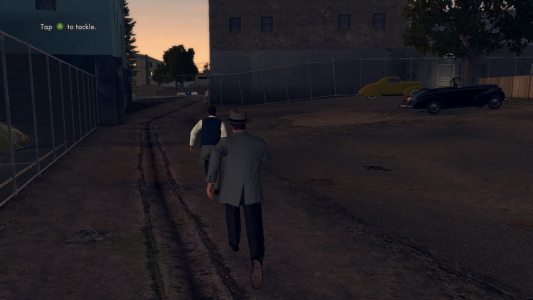
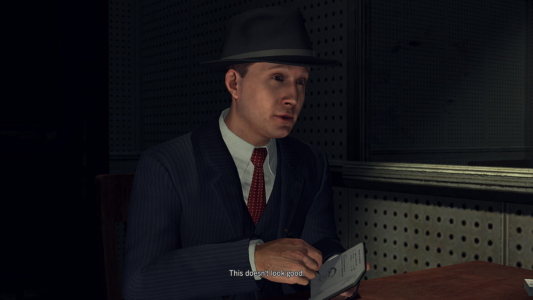
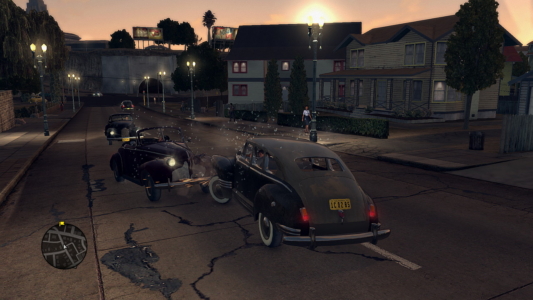
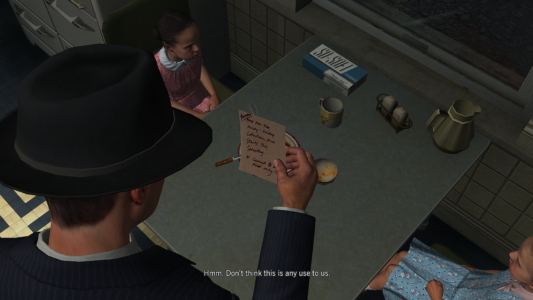
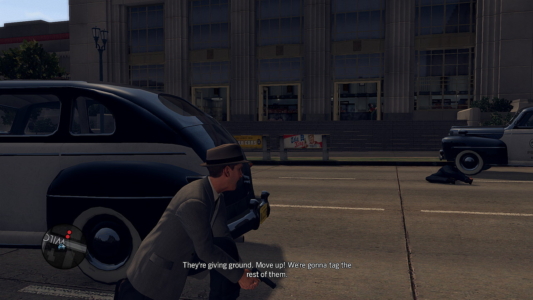
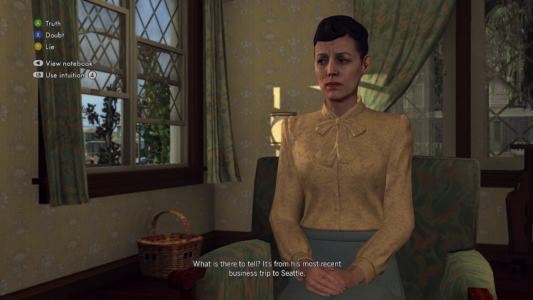
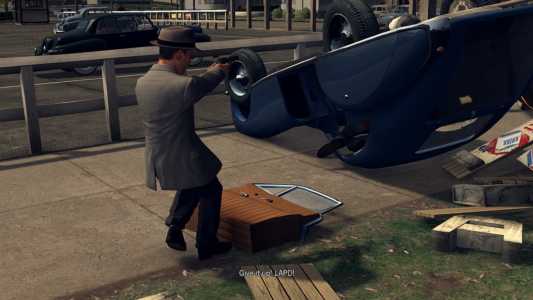

 Posts
Posts
I actually bought this one a few weeks ago, and as it turns out, a friend of mine bought this a couple weeks before I did.
I don’t know why we’re all jumping on a game that came out seven years ago at pretty much the same time, but I can see that we all made a solid purchase.
May 1, 2018 @ 7:24 am
Playing it through on PC was my third or fourth attempt at L.A. Noire – I played bit of it on someone else’s Xbox, then got a copy for PS3 but the console died two weeks later, then got an Xbox of my own and a copy of the game but didn’t persist with it for some reason.
Having finally made it to the end I can see myself giving it another run through at some point.
May 1, 2018 @ 8:51 am
JUST TELL US WHERE YOU HID THE BODY, RIK!!!
Actually bought the recent-ish updated PS4 version and been meaning to go through it with the missus. Really enjoyed it when it came out, and remember being impressed with the story. Thought it was on the level of Chinatown, or any other period drama based on real-life shady L.A. politics (even Roger Rabbit’s freeway scam was based on what really happened)
May 3, 2018 @ 10:23 pm
I wanted to say more about the story but didn’t want to get into spoiler territory. (Although this one would be good for a totally spoilerrific discussion). It’s good, though, right?
I steered away from saying I haven’t seen much film noir or L.A. politics/gangster movies, as so many of my reviews seem to begin with or contain the sentence ‘I don’t know much about X’. Although I guess I have now inadvertently said it again. I haven’t even seen Roger Rabbit!
May 4, 2018 @ 8:23 am
THIS GAME CAME OUT SEVEN YEARS AGO AND WE ALL HAVE RECENT HISTORY WITH IT THIS IS SOME INCREDIBLE HIVEMIND.
May 8, 2018 @ 7:57 am